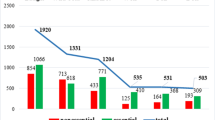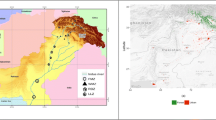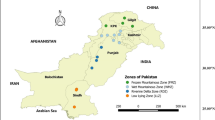Abstract
The capacity of mammal hair to absorb toxic metals and its utility in biomonitoring has been broadly studied. Though these metal-binding properties has generally been attributed to the sulphur contained in cysteine, an amino acid that forms part of keratin, there are not many experimental studies that analyze the role of sulphur in the external deposition of potentially toxic metallic elements in order to better understand the potential of hair in biomonitoring and generate better tools for differentiating between internal and external deposition of contaminants. In this study, an experimental analysis is carried out using a scanning electron microscope on hairs of five terrestrial mammal species (Peromyscus furvus, P. maniculatus, Glossophaga soricina, Artibeus jamaicensis and Marmosa mexicana) treated with cadmium, copper and lead salts. We quantified absorbed metals as well as natural elements of the hair by energy dispersive X-ray spectroscopy (EDS) to analyze using simple statistics the role of sulphur in the absorption Cd, Cu and Pb. Given the lack of studies comparing the mechanisms of deposition of metal elements among different orders of Class Mammalia, external morphology was considered to be an important factor in the deposition of metallic particles of Cd, Cu and Pb. Bat species (Glossophaga soricina, Artibeus jamaicensis) showed a high concentration of particles in their scales, however, no between-species differences in metal absorption were observed, and during the exogenous deposition metal particles do not permeate the medulla. These results suggest that the sulphur in hair itself cannot bind metals to hair cuticle and that hair absorption capacity depends on a variety of factors such as aspects of hair morphology.







Similar content being viewed by others
References
Amman, B. R., Owen, B. R., & Bradley, R. D. (2002). Utility of hair structure for taxonomic discrimination in bats, with an example from the bats of Colorado. Occasional Papers, The Museum, Texas Tech University, 216, 1–16.
Aryal, S., Remant, B. K., Narayan, B., Kim, C. K., & Kim, H. Y. (2006a). Study of electrolyte induced aggregation of gold nanoparticles capped by amino acids. Journal of Colloid and Interface Science, 299(1), 191–197.
Aryal, B. K., Remant, N., Dhramaraj, N., Bhattarai, C. H. K., & Kim, H. Y. (2006b). Spectroscopic identification of S-Au interaction in cysteine capped gold nanoparticles. Spectrochimica Acta Part A: Molecular and Biomolecular Spectroscopy, 63(1), 160–163.
Bencko, V. (2005). Hair and exposure to environmental pollutants. In D. J. Tobin (Ed.), Hair in toxicology: an important bio-monitor (pp. 159–174). Cambridge: The Royal Society of Chemistry.
Block, R. J. (1939). The composition of keratins: the amino acid composition of hair, wool, horn, and other eukeratins. The Journal of Biological Chemistry, 128, 181–186.
Brown, G. E., Foster, A. L., & Ostergren, J. D. (1999). Mineral surfaces and bioavailability of heavy metals: a molecular-scale perspective. Proceedings of the National Academy of Sciences, 96(7), 3388–3395.
Burger, J., Marquez, M., & Gochfeld, M. (1994). Heavy metals in the hair of opossum from Palo Verde, Costa Rica. Archives of Environmental Contamination and Toxicology, 27(4), 472–476.
Callender, E. (2003). Heavy metals in the environment—historical trends. In H. D. Holland & K. K. Türekian (Eds.), Treatise on Geochemistry (pp. 67–105). New York: Elsevier.
Cargnello, J. A., Powell, J. J., & Thompson, R. P. H. (1995). Elemental hair using nuclear microscopy and x-ray energy dispersive spectroscopy. Analyst, 120(3), 783–787.
Chernova, O. F. (2002). Architectonic and diagnostic significance of hair cuticle. Izvestiya Akademii Nauk, Seriya Biologicheskaya, 29(3), 238–247.
Chernova, O. F. (2003). Architectonic and diagnostic significance of hair cortex and medulla. Akademii Nauk, Seriya Biologicheskaya, 30(1), 53–62.
Combs, D. K., Goodrich, R. D., & Meiske, J. C. (1982). Mineral concentrations in hair as indicators of mineral status: a review. Journal of Animal Science, 54(2), 391–398.
D’Havé, H., Scheirs, J., Mubiana, V. K., Verhagen, R., Blust, R., & De Coen, W. (2006). Non-destructive pollution exposure assessment in the European hedgehog (Erinaceus europaeus): II. Hair and spines as indicators of endogenous metal and as concentrations. Environmental Pollution, 142(3), 438–448.
Daniel, W. W., & Cross, C. L. (2010). Biostatistics: a foundation for analysis in the health sciences. New York: John Wiley & Sons.
Esteban, M., & Castaño, A. (2009). Non-invasive matrices in human biomonitoring: a review. Environment International, 35(2), 438–449.
Filistowicz, A., Dobrzanski, Z., Przysiecki, P., Nowicki, S., & Filistowicz, A. (2011). Concentration of heavy metals in hair and skin of silver and red foxes (Vulpes vulpes). Environmental Monitoring and Assessment, 182(1), 477–484.
Friel, J. J. (1994). X-ray and image analysis in electron microscopy. Princeton Gamma-Tech, Incorporated.
Goldstein, J., Newbury, D. E., Echlin, P., Joy, D. C., Romig Jr, A. D., Lyman, C. E., Fiori, C. & Lifshin, E. (1992). Scanning electron microscopy and X-ray microanalysis: a text for biologists, materials scientists, and geologists. Springer Science & Business Media.
Hausman, L. A. (1920). Structural characteristics of the hair of mammals. The American Naturalist, 54(635), 496–523.
Hausman, L. A. (1924). Further studies of the relationships of the structural characters of mammalian hair. The American Naturalist, 58(659), 544–557.
Hausman, L. A. (1930). Recent studies of hair structure relationships. Scientific Monthly, 30(3), 258–277.
Hawkins, D. P., & Ragnarsdóttir, K. V. (2009). The Cu, Mn and Zn concentration of sheep wool: influence of washing procedures, age and colour of matrix. Science of the Total Environment, 407(13), 4140–4148.
Hernout, B. V., McClean, C. J., Arnold, K. E., Walls, M., Baxter, M., & Boxall, A. B. (2016). Fur: a non-invasive approach to monitor metal exposure in bats. Chemosphere, 147, 376–381.
Hickey, M. B. C., Fenton, M. B., MacDonald, K. C., & Soulliere, C. (2001). Trace elements in the fur of bats (Chiroptera: Vespertilionidae) from Ontario and Quebec, Canada. Bulletin of Environmental Contamination and Toxicology, 66(6), 669–706.
Hinners, T. A., Terril, W. J., Kent, J. L., & Colucci, A. V. (1974). Hair-metal binding. Environmental Health Perspectives, 8, 191–199.
Hong, L., & Simon, J. D. (2007). Current understanding of the binding sites, capacity, affinity, and biological significance of metals in melanin. The Journal of Physical Chemistry B, 111(28), 7938–7947.
Howell, D. J., & Hodgkin, N. (1976). Feeding adaptations in the hairs and tongues of nectar-feeding bats. Journal of Morphology, 148(3), 329–339.
Hubbart, J. A. (2012). Hair analysis as an environmental health bioindicator: a case-study using pelage of the California ground squirrel (Spermophilus beecheyi). International Journal of Applied Science and Technology, 2(3), 277–294.
Kales, S. N., & Christiani, D. C. (2005). Hair and metal toxicity. In D. J. Tobin (Ed.), Hair in toxicology: an important bio-monitor (pp. 125–158). Cambridge: The Royal Society of Chemistry.
Kar, P., & Misra, M. (2004). Use of keratin fiber for separation of heavy metals from water. Journal of Chemical Technology and Biotechnology, 79(11), 1313–1319.
Katayama, A., Bhula, R., Burns, G.R., Carazo, E., Felsot, A., Hamilton, D. & Linders, J. (2010). Bioavailability of xenobiotics in the soil environment. In: Reviews of environmental contamination and toxicology (pp. 1–86). New York: Springer
Larsson, B. (1993). Interaction between chemicals and melanin. Pigment Cell & Melanoma Research, 6(3), 127–133.
Limic, N., & Valkovic, V. (1987). Incorporation of trace elements from environment into the hair structure. Biological Trace Element Research, 12(1), 363–373.
Mars, U., & Larsson, B. (1999). Pheomelanin as a binding site for drugs and chemicals. Pigment Cell Research, 12(4), 266–274.
Martin, M. H. (2012). Introduction. In: Biological monitoring of heavy metal pollution: land and air. Springer Science & Business Media.
McLean, C., Koller, C. E., Rodger, J. C., & MacFarlane, G. R. (2009). Mammalian hair as an accumulative bioindicator of metal bioavailability in Australian terrestrial environments. Science of the Total Environment, 407(11), 3588–3596.
Monier, M., Nawar, N., & Abdel-Latif, D. A. (2010). Preparation and characterization of chelating fibers based on natural wool for removal of Hg(II), Cu(II) and Co(II) metal ions from aqueous solutions. Journal of Hazardous Materials, 184(1), 118–125.
Moore, J. W. & Ramamoorthy, S. (2012). Heavy metals in natural waters: applied monitoring and impact assessment. Springer Science & Business Media.
Nandi, D., Patra, R. C., & Swarup, D. (2005). Arsenic residues in hair samples from cattle in some arsenic affected areas of west Bengal, India. Bulletin of Environmental Contamination and Toxicology, 75(2), 251–256.
Needham, L. L. (2008). Introduction to biomonitoring. Journal of Chemical Health and Safety, 15(6), 5–7.
Needham, L. L., Calafat, A. M., & Barr, D. B. (2007). Uses and issues of biomonitoring. International Journal of Hygiene and Environmental Health, 210(3), 229–238.
Noback, C. (1951). Morphology and phylogeny of hair. Annals of the New York Academy of Sciences, 53(3), 476–492.
Noguchi, T., Itai, T., Kawaguchi, M., Takahashi, S. & Tanabe, S. (2012). Applicability of human hair as a bioindicator for trace elements exposure. In: M. Kawaguchi, M., K. Misaki, H. Sato, T. Yokokawa, T. Itai, T. M. Nguyen, J. Ono & S. Tanabe (Eds), Interdisciplinary Studies on Environmental Chemistry-Environmental Pollution and Ecotoxicology (pp. 73–77).
Onuwa, O. P., Eneji, I. S., & Sha’Ato, R. (2012). Analysis of heavy metals in human hair using atomic absorption spectrometry (AAS). American Journal of Analytical Chemistry, 3, 770–773.
Paschal, D. (2008). Biological monitoring of toxic elements. Journal of Chemical Health and Safety, 15(6), 8–13
Patil, K., Smith, S. V., Rajkhowa, R., Tsuzuki, T., Wang, X., & Lin, T. (2012). Milled cashmere guard hair powders: absorption properties to heavy metal ions. Powder Technology, 218, 162–168.
Patra, R. C., Swarup, D., Sharma, M. C., & Naresh, R. (2006). Trace mineral profile in blood and hair from cattle environmentally exposed to lead and cadmium around different industrial units. Journal of Veterinary Medicine, 53(10), 511–517.
Patra, R. C., Swarup, D., Naresh, R., Kumar, P., Nandi, D., Shekhar, P., Roy, S., & Ali, S. L. (2007). Tail hair as an indicator of environmental exposure of cows to lead and cadmium in different industrial areas. Ecotoxicology and Environmental Safety, 66(1), 127–131.
Pereira, R., Ribeiro, R., & Goncalves, F. (2004). Scalp hair analysis as a tool in assessing human exposure to heavy metals (S. Domingos mine, Portugal). Science of the Total Environment, 327(1), 81–92.
Preston, J. R. (1975). An account of investigations carried out into marine pollution control needs in Hong Kong with particular reference to the existing and future urban centers centred about Victoria and Tolo Harbours. In: Proceedings of the Pacific Science Association Special Symposium on Marine Sciences, Hong Kong (pp. 91–4).
R Core Team. (2013). R: A language and environment for statistical computing. Vienna: R Foundation for Statistical Computing http://www.R-project.org/.
Rashed, M. N., & Soltan, M. E. (2005). Animal hair as biological indicator for heavy metal pollution in urban and rural areas. Environmental Monitoring Assessment, 110(1–3), 41–53.
Schleich, C. E., Beltrame, M. O., & Antenucci, C. D. (2010). Heavy metals accumulation in the subterranean rodent Ctenomys talarum (Rodentia: Ctenomyidae) from areas with different risk of contamination. Folia Zoologica, 59(2), 108–114.
Schramm, K. W. (2008). Hair-biomonitoring of organic pollutants. Chemosphere, 72(8), 1103–1111.
Stoves, J. L. (1942). The histology of mammalian hair. Analyst, 67(801), 385–387.
Taddei, P., Monti, P., Freddi, G., Arai, T., & Tsukada, M. (2003). Binding of Co (II) and Cu (II) cations to chemically modified wool fibres: an IR investigation. Journal of Molecular Structure, 650(1), 105–113.
Tan, T. C., Chia, C. K., & Teo, C. K. (1985). Uptake of metal ions by chemically treated human hair. Water Research, 19(2), 157–162.
Tchounwou, P. B., Yedjou, C. G., Patlolla, A. K., & Sutton, D. J. (2012). Heavy metal toxicity and the environment. In A. Luch (Ed.), Molecular, Clinical and Environmental Toxicology (pp. 133–164). Basel: Springer.
Tellez, M., & Merchant, M. (2015). Biomonitoring heavy metal pollution using an aquatic apex predator, the American alligator, and its parasites. PloS One, 10(11), 1–18.
Teerink, B. J. (2003). Hair of West-European mammals: Atlas and identification key. Cambridge University Press.
Tobin, D. J. (2005). The human hair fiber. In D. J. Tobin (Ed.), Hair in toxicology: an important bio-monitor (pp. 34–54). Cambridge: The Royal Society of Chemistry.
Tobin, D. J. (2008). Human hair pigmentation-biological aspects. International Journal of Cosmetic Science, 30(4), 233–257.
Torres, M. A., Barros, M. P., Campo, S. C. G., Pinto, E., Rajamani, S., Sayre, R. T., & Colepicolo, P. (2008). Biochemical biomarkers in algae and marine pollution: a review. Ecotoxicology and Environmental Safety, 71(1), 1–15.
Van der Oost, R., Beyer, J., & Vermeulen, N. P. E. (2003). Fish bioaccumulation and biomarkers in environmental risk assessment: a review. Environmental Toxicology and Pharmacology, 13(2), 57–149.
Yamashita, T. (1996). Determination of trace elements in hair by ICP-MS. Power (W), 378(378), 1–5.
Zhou, Q., Zhang, J., Fu, J., Shi, J., & Jiang, G. (2008). Biomonitoring: an appealing tool for assessment of metal pollution in the aquatic ecosystem. Analytica Chimica Acta, 606(2), 135–150.
Acknowledgements
We specially thank to the Instituto de Física, Universidad Nacional Autónoma de México for facilitating the laboratory used in the experiments. Thanks to the MZFC-M for providing the samples. This paper constitutes part of the doctoral research of A.N.R.L., who thanks the graduate programme Doctorado en Ciencias Biológicas, UNAM and acknowledges the scholarships provided by CONACyT and UNAM. Founding for this study was provided by the project CONACyT 239482 and PAPIIT IN-216713. We are also grateful with Itzel Reyes-Chaparro and José Armando Reséndiz-Arroyo for their help during the experiments and analysis.
Author information
Authors and Affiliations
Corresponding author
Rights and permissions
About this article
Cite this article
Rendón-Lugo, A.N., Santiago, P., Puente-Lee, I. et al. Permeability of hair to cadmium, copper and lead in five species of terrestrial mammals and implications in biomonitoring. Environ Monit Assess 189, 640 (2017). https://doi.org/10.1007/s10661-017-6338-z
Received:
Accepted:
Published:
DOI: https://doi.org/10.1007/s10661-017-6338-z




